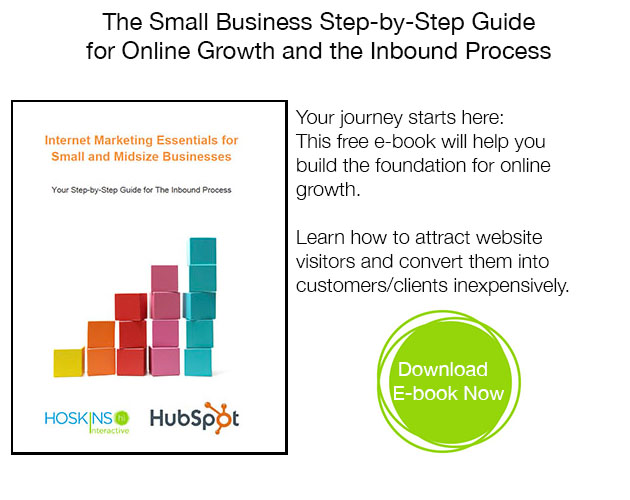Hoskins Interactive Media & Marketing Blog
Current Articles Rss FeedWhy Integrated Content Marketing Platforms Cost Less, Offer Better ROI
Posted bywpbizSat, Sep 14, 2013 @ 1:13 pm
As a small business owner, you expect your marketing manager or consultant to get traffic and leads using inexpensive tools you purchased, tools designed for small business, like: Constant Contact, HootSuite, Google Analytics, TweetDeck, etc. But here’s the thing: your marketer is a Renaissance Man. He or she is best armed with an integrated content marketing platform—and it’s a better deal for you.
Today marketers are expected to be part journalist, publisher, Web developer, website and graphic designer, analyst, networker and salesman. It can be exhausting, especially when resources are tight. Here are a few things they need to do the job:
- Content management system that may require light HTML skills
- Blogging platform
- Way to view and respond to social media
- A keyword tool
- A tool to manage email
- Design software to manipulate images and publish professional-looking content, calls-to-action.
- Ability to compile analytics on all activity, assess how the results intersect and create custom reports.
Invest in tools that make marketing easier and provide prospect/lead intelligence.
More than anything, marketers need help writing. But they are often left drained, depleted and defeated when overwhelmed with the volume of tasks and inability to show executives the ROI of marketing activity. They just can’t with separate tools for the above activities.
It feels like you save money with a $20/month subscription to Constant Contact or Mail Chimp. I mean, hey: great price. But do you find out what you ultimately want to know? Are the people you’re emailing visiting your website? (the above tools will only tell you if recipients opened or clicked the link—not what happened after). What pages did they visit on your site? Did they download any content? What interests them on your site? Do they become actual leads? Did they call you for your services? Are they now a customer?
The analytics are fairly limited for piecemeal tools like these. And Google Analytics, while free, is going to show you how healthy your site is (and cite backend issues), what’s happening on your site, but it won’t tell you who the visitors are or track lead behavior. Tracking lead behavior is really important, because prospects can take an indirect path to becoming a customer. It typically takes multiple visits, views of your content and action on their end—like downloading information—before they are ready to contact you for your services. Keeping track of online behavior gives you a better chance of getting their business.
Managing work on multiple tools is also a bit frustrating. Particularly when it comes to social media: I mean, why have one tool to publish social media teasers but another to view Twitter streams? There isn’t one tool that allows you to monitor and publish all social activity from all platforms. Yet.
What this inexpensive yet fragmented approach costs you is knowledge about what campaigns and activities are working and what efforts are providing value to your company.
Inbound marketing, coupled with the use of an all-in-one marketing platform like HubSpot, makes it possible to perform all of these marketing functions using one tool:
- Lead nurturing
- Blogging
- Managing website content
- Monitoring and publishing social media
- Creating landing pages, housing content offers, creating forms and calls-to-action.
- But the best part? Integrated analytics: you can track how these activities intersect and see prospect activity across your Web presence.
When integrated with your customer relationship management platform, you can track the path from first-time visitor to customer. Being able to identify prospects, leads and customers on social media in real time and seeing what they are saying is a huge boon—you can nip issues in the bud and offer assistance, offers, discounts, rewards or just…be present in a easy way.
You won’t get that kind of lead or customer intelligence from fragmented tools.
The work is more manageable and efficient from an integrated content marketing platform—and not just for the marketer. Everyone in the company granted access can contribute content and monitor social activity and analytics. Sharing information can be cumbersome as an organization grows, why not make it easier for all to see the same information and work together?
Related articles:
- You Need to Invest Time or Money to Get Customers From Your Website
- 4 Ways Monitoring Social Media Helps You Get and Keep Customers
- 6 Small Biz Ideas for Security, Productivity & Facebook Prowess
- It’s Cheaper Than a Redesign: Optimize Your Website, Get More Customers
________________________________________________________________________________
Terra Hoskins wants to help small businesses grow—she’s experienced the power of inbound while managing marketing at a small company and seeks to share her knowledge as principal of inbound marketing agency, Hoskins Interactive. She tweets at @terrahoskins.

